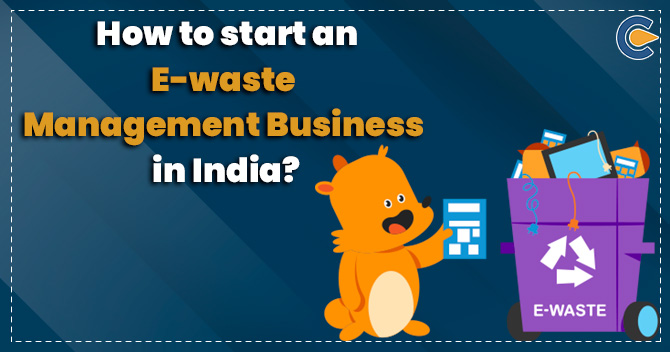Plastics are long-lasting, lightweight, and inexpensive materials. They can easily be shaped into various products that find use in many applications. The facility is provided to use the plastic scrap within the premises and also have adequate pollution control equipment to control the pollution. “To recycle or Not to Recycle” is a big question regarding plastic recycling. Some plastic types are not recycled because they are not economically feasible. This article will cover the concept of Plastic Recycling Plant, its effects, recent developments, and related obstacles.
What is Plastic Recycling Plant?
A plastic recycling plant is set up to recover waste or scrap plastic and recondition the materials into functional and valuable products. The objective of recycling plastic is to reduce high rates of plastic pollution while putting less pressure on fresh materials to produce brand new plastic products. Plastic Recycling Plant will help preserve resources and divert plastics from landfills or unintended destinations such as oceans. Setting up a plant to recycle the ungathered plastic waste thrown into the natural environment in oceans or piling up on lands while complying with the Central Pollution Control Board norms.
Requirements for Opening a Plastic Waste Recycle Plant
The essential requisites of a Plastic Waste Recycle Plant
- Decent Place-The essential requisite for opening a Plastic Waste Recycle plant is a decent place. There should be a decent space where all the waste and waste products apart from equipment and utilities can be Kept. Also, a closed area is similar to a factory, but a small room can work. It should be at least 200 sq. feet in size.
- Proper Machinery– The next necessary requisite is the proper machinery to recycle plastic waste.
- Appropriate Suppliers– Also, a network of plastic waste suppliers must supply the required amount of plastic waste.
The other requisites include an appropriate electric connection, generator for an emergency, papers for starting a recycling business from the delegated authority, permission from other selected sources, experienced staff that can guide how to recycle the plastic, and containers to store the recycled product, etc. An individual should take the vital connection of electricity based on your power demand.
Effect of Plastic and related Products
Plastic waste is harmful and creates immense damage to the land decomposed. Plastic waste is entirely non-biodegradable. This implies it cannot be destroyed or mixed with the soil. It has to be burnt by releasing harmful gases like carbon monoxide that harms the environment and human health. Soil gets destructed when plastic is buried inside it as it stops the air circulation and passing of other minerals essential for soil growth.
Water bodies and aquatic life is adversely affected due to the plastic waste being disposed of in the water. It hinders the sunlight and oxygen into the water, disturbing marine life immensely. Certain chemicals make plastic; those chemicals are toxic to the environment.
The increase in plastic waste has occupied a considerable land share, which could be used for better purposes.
Types of Recyclable Plastics
Below-mentioned are the six types of plastics that are recyclable-
- PS (Polystyrene)
- PP (Polypropylene)
- LDPE (Low-density polyethylene)
- PVC (Plasticized polyvinyl chloride)
- HDPE (High-density polyethylene)
- PET (Polyethylene terephthalate)
At Present, Only PET, HDPE, and PVC plastic products are recycled under curbside recycling programs. PS, PP, and LDPE are not recycled because these plastic materials are more difficult and expensive to process.
Recent advances in Plastic Recycling Plant
Continuous change in recyclingautomation has made the plastic recycling process more accessible andcost-effective. Such machinery includes authentic detectors and futuristicdecision and identified software that altogether increases the productivity andaccuracy of automatic categorization of plastics and their products.
Another significant innovation inplastic recycling has been finding profitable applications for recycledpolymers in single component recycling processes.
Some European countries have begun collecting rigid packaging and restricted post-consumer flexible packaging. Also, due to the latest advancements in washing and arranging technologies, the recycling of non-bottle plastic packaging has become attainable.
Obstacles for the Plastic Recycling Industry
While establishing a Plastic recycling plant, the industrialist faces many obstacles, varying from mixed plastics to hard-to-remove leftovers. The composite plastic stream’s economical and efficient recycling may be the most significant obstacle facing the recycling industry. Experts think that designing plastic packaging and other plastic products with recycling can play an essential role in meeting this obstacle.
Also, the recovery and recycling of post-consumer flexible packaging is a recycling process. Majorly, material recovery facilities and local authorities do not actively collect it due to inappropriate equipment that can easily separate them.
Equipment required in Plastic Recycling plant to Recycle the Plastic
Various machines are required depending upon the quantity and quality of plastic to recycle. Also, it may vary based on the type of end product the industry wants to acquire.
Below -mentioned equipment is required for carrying out the activities of the Plastic recycling plant in E-Waste management-
- Melting Machine
- Rope Processing Machine
- Extruder Machine
- Recycling Plant
- Sorting Machine
- Cleaning and Washing Machine
- Conveyer Belt
- Compressor
Conclusion
Plastic Recycling Plant is critical to efficient end-of-life plastic management[1]. Enhanced recycling rates have resulted from greater public awareness and the increased effectiveness of recycling operations. Operational efficiency will be supported by existing investment in research and development.
Recycling a more fantastic range of post-consumer plastic products and packaging will further boost recycling and divert more end-of-life plastic wastes from landfills. Industry and policymakers can also help stimulate recycling by requiring recycled paste vs. unused plastics.
Read our article:Know the legalities for establishing a Plastic waste recycling plant in India











